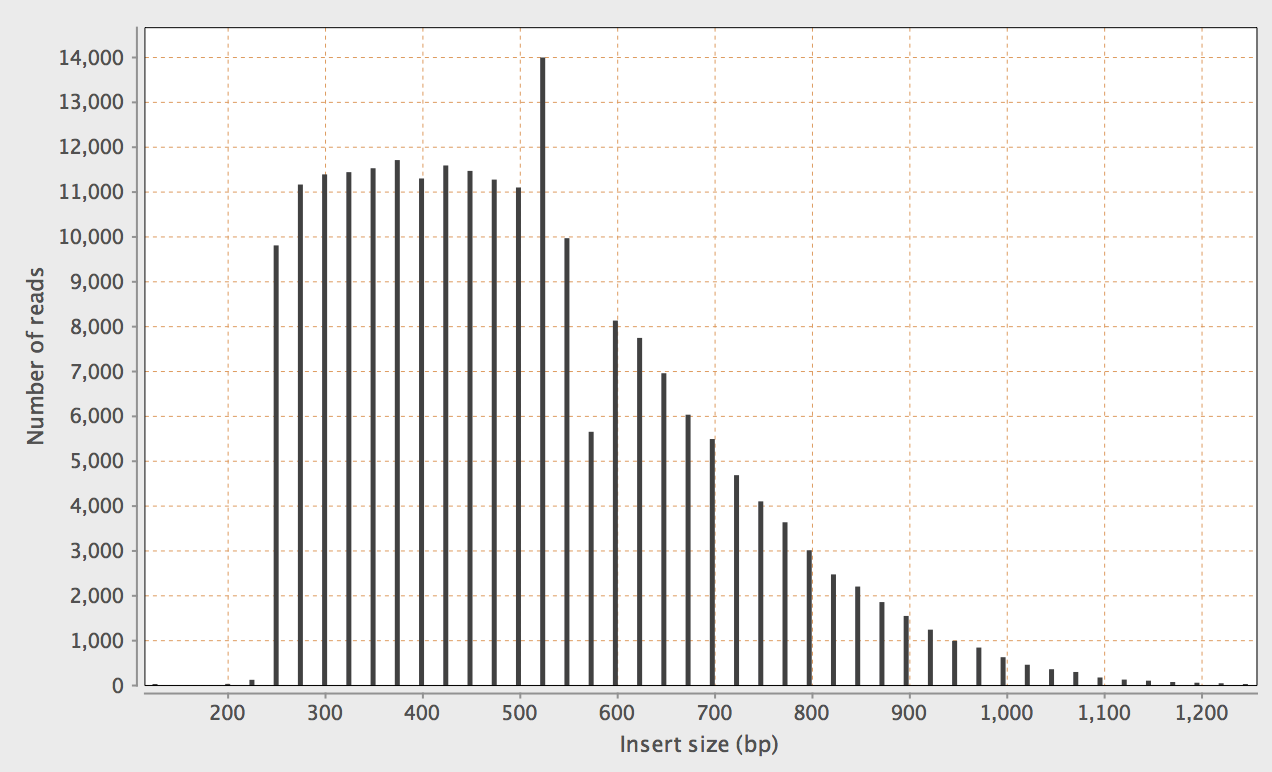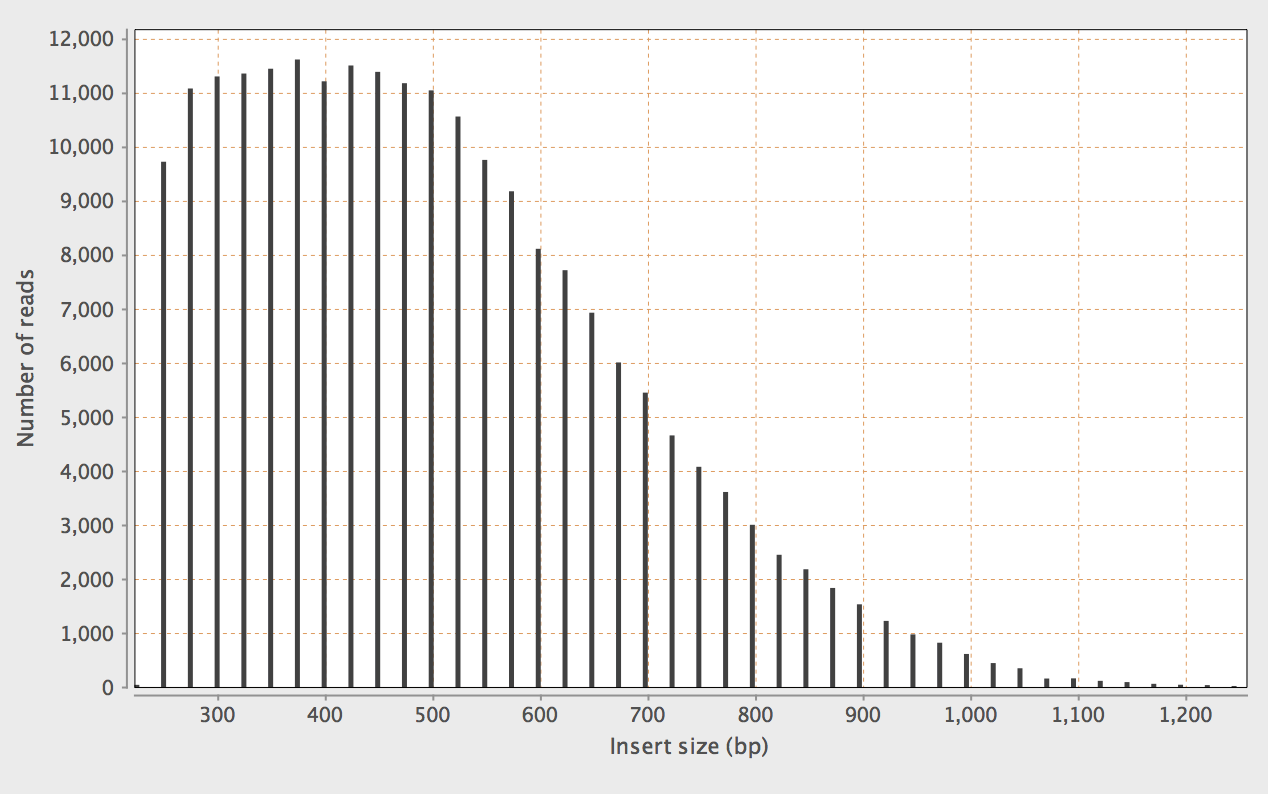Use X with bowtie2 to set minimum and maximum insert sizes for Nextera libraries
02 May 2013Bowtie2 defaults to a minimum and maximum insert size of 0 and 500.
Obviously in many cases these defaults are inappropriate and should be increased.
What is unexpected, for me at least, is the effect these defaults have on insert size calculation. It seems that this value actually affects the placement of reads, and therefore also the calculation of insert sizes.
Perhaps best illustrated with an example, visualised with Qualimap, with -X 500

This results in quite an alarming peak. There are two positions which are significantly enriched at 547-548bp:
samtools view bamfile | cut -f 9 | sort -n | uniq -c
..
421 544
596 545
721 546
1654 547
3050 548
190 549
187 550
212 551
..
Re-running Bowtie2 with -X 1000:

Shows a more appropriate distribution.
I assume this is because Bowtie2 tries to optimise the choice of alignment to favour those closer to the maximum insert size? The manual states:
The maximum fragment length for valid paired-end alignments. E.g. if -X 100 is specified and a paired-end alignment consists of two 20-bp alignments in the proper orientation with a 60-bp gap between them, that alignment is considered valid (as long as -I is also satisfied). A 61-bp gap would not be valid in that case. If trimming options -3 or -5 are also used, the -X constraint is applied with respect to the untrimmed mates, not the trimmed mates.
I assume this relates also to the default setting for concordant alignments.
By default, bowtie2 looks for discordant alignments if it cannot find any concordant alignments. A discordant alignment is an alignment where both mates align uniquely, but that does not satisfy the paired-end constraints (–fr/–rf/–ff, -I, -X).
Interestingly this peak position seems to be independent of the species used. Therefore I assume it relates more to the read length, in this case 2x250.
I tried it with Bowtie2 2.0.2 and 2.1.0.
It might be reasonable to change these defaults now that 2x250 reads are common-place.
Thanks to Josh Quick for figuring out the reason for this.